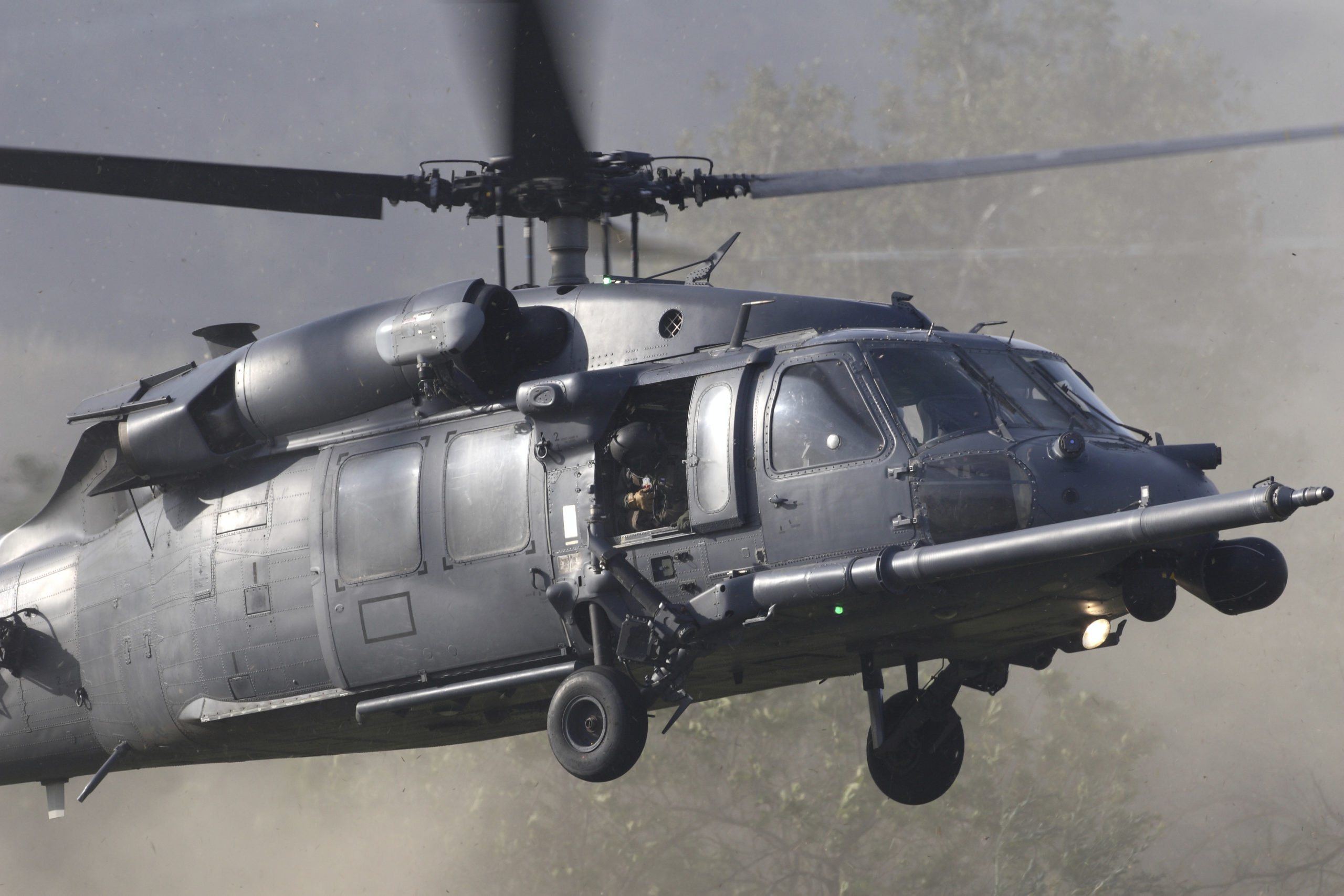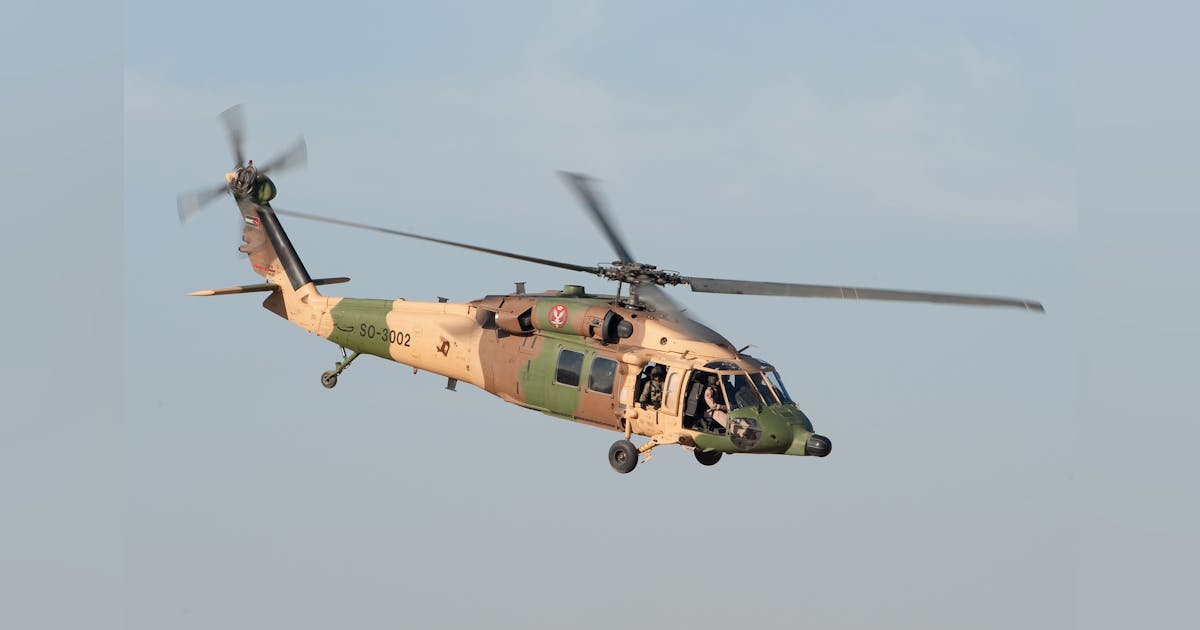Understanding the UH 60: Design, History, and Its Impact on Military Aviation
Understanding the UH 60: Design, History, and Its Impact on Military Aviation
Blog Article
UH 60 Helicopter: Integrating Power and Accuracy in One Aircraft
The UH-60 helicopter stands for a considerable development in army aviation, combining powerful power with unmatched precision. Its innovative design and functional capacities allow it to do a large variety of objectives, from tactical troop releases to critical clinical discharges. As we discover its technological advancements and essential functions, it ends up being evident that the UH-60 not only fulfills the rigorous demands of contemporary warfare however additionally reshapes how aerial operations are performed. What implications does this change hold for future armed forces interactions and functional strategies?
Overview of the UH-60 Helicopter
The UH-60 helicopter, commonly called the Black Hawk, is a flexible energy airplane developed by Sikorsky Airplane. Introduced in the late 1970s, it was created to satisfy the united state Military's need for a tactical transportation helicopter capable of fast troop deployment and logistical assistance in various operational settings. The Black Hawk's design emphasizes versatility, enabling it to execute numerous objectives consisting of medical emptying, search and rescue, and airborne reconnaissance.
With its twin-engine setup, the UH-60 gives enhanced efficiency and integrity, necessary for both combat and altruistic procedures. The helicopter's durable building and construction and advanced avionics contribute to its operational efficiency in challenging conditions, including negative weather and high elevations. Additionally, the Black Hawk has acquired global recognition, serving not only U.S. military pressures yet also many allied nations.
The UH-60's functional history is marked by its release in different conflicts, showcasing its capacities in real-world circumstances. As army demands evolve, the Black Hawk stays an essential possession, personifying the concepts of modern-day armed forces aeronautics through its mix of endurance, maneuverability, and multi-role capability. Its legacy continues to influence future rotorcraft design and operational tactics.
Secret Functions and Specifications

The UH-60 is built with a composite airframe and progressed blades system, including a four-blade major rotor and a four-blade tail rotor that add to its agility and stability. In addition, its advanced avionics suite includes digital flight controls and a multi-mode radar, facilitating accurate navigation and target purchase.

Versatile Mission Abilities
Developed for adaptability, the UH-60 Black Hawk is capable of executing a wide variety of missions across numerous operational theaters. Its flexibility permits effective performance in battle, medical discharge, logistical support, and search and rescue operations. This multi-role helicopter is employed by find out here now the united state Military and numerous international pressures, highlighting its international significance.
The Black Hawk can be set up for army transportation, accommodating up to 11 soldiers, or modified for cargo missions, lugging crucial products and equipment. Its specialized versions even more enhance mission capability; as an example, the MEDEVAC variation is equipped with clinical employees and progressed life-saving equipment, allowing quick evacuation of damaged personnel from battle zone.
Along with its role in combat and clinical operations, the UH-60 is also utilized for reconnaissance and surveillance goals, leveraging its dexterity and rate to gather critical knowledge. The helicopter's capability to run in varied settings-- ranging from frozen conditions to tropical environments-- shows its strength and adaptability. uh 60. On the whole, the UH-60 Black Hawk stands as a testimony to contemporary armed forces aviation, capable of fulfilling countless roles while making sure goal success in intricate situations
Technological Developments in Style
Exactly how has the style of the UH-60 Black Hawk evolved to meet the needs of modern-day warfare? The UH-60 has gone through considerable technological developments that enhance its functional capabilities and flexibility. Among one of the most noteworthy developments is the combination of advanced avionics, that include electronic trip control systems and boosted navigation technologies. These improvements permit for better situational understanding and accuracy in various environments.
Furthermore, the airframe has actually been made with advanced products, such as composite structures, that minimize weight while raising resilience. This change not just improves the helicopter's fuel effectiveness yet additionally improves its survivability in aggressive scenarios. Additionally, the rotor systems have been maximized for improved efficiency, including low-noise styles and far better lift capabilities.
The unification of modular systems enables quick reconfiguration of the helicopter to suit particular objective requirements, whether for army transport, medevac, or special operations. Enhanced protective systems and weaponry alternatives additionally enhance its convenience on the battleground. Jointly, these developments make sure that the UH-60 Black Hawk remains a crucial asset in modern-day army operations, efficient in addressing developing challenges in diverse fight environments.
Effect on Modern War
The innovations in the UH-60 Black Hawk's style have dramatically influenced contemporary warfare techniques and operational efficiency. Its flexibility permits a variety of objectives, including army reconnaissance, medevac, and transport, which are critical in asymmetric warfare scenarios. The helicopter's capability to run in varied settings improves the armed force's tactical versatility, making it possible for rapid deployment and support my company in different combat situations.
Additionally, the assimilation of advanced avionics and interaction systems has transformed battlefield coordination. Real-time data sharing and enhanced situational understanding allow leaders to make enlightened choices rapidly. This capability is important in joint procedures, where several branches of the armed forces collaborate to accomplish typical objectives.
The Black Hawk's reliability and longevity in severe problems have also made it a preferred in worldwide armed forces procedures. Its presence on the battleground not just improves troop morale yet additionally works as a deterrent versus adversaries who recognize its functional capability. Ultimately, the UH-60 Black Hawk exemplifies how modern-day rotary-wing aircraft can enhance army performance, adapt to progressing threats, and redefine the standards of modern-day warfare, making it an essential property in contemporary armed forces toolboxes.
Final Thought
In summary, the UH-60 helicopter stands for a considerable innovation in army aviation, combining power and precision to meet the rigorous needs of contemporary combat scenarios - uh 60. Its durable engineering, advanced technological attributes, and convenience in mission execution emphasize its vital duty in modern war. As a crucial property for army transport, medical emptying, and numerous assistance operations, the UH-60 remains to improve functional efficiency, showing the withstanding importance of technology in aerial armed forces abilities

The UH-60 helicopter, generally recognized as the Black Hawk, is a flexible energy airplane developed by Sikorsky Airplane. In general, the UH-60 Black Hawk's sophisticated features and specs make it a formidable asset in contemporary army and humanitarian operations.
On the whole, the UH-60 Black Hawk stands as a testament to contemporary army air travel, qualified of meeting many duties while guaranteeing goal success in intricate situations.
Jointly, these innovations make certain that the UH-60 Black Hawk remains a pivotal possession in contemporary army operations, capable of attending to progressing challenges in websites diverse battle environments.
Ultimately, the UH-60 Black Hawk exemplifies how modern rotary-wing airplane can improve military performance, adapt to evolving dangers, and redefine the paradigms of modern-day war, making it an indispensable possession in contemporary military arsenals.
Report this page